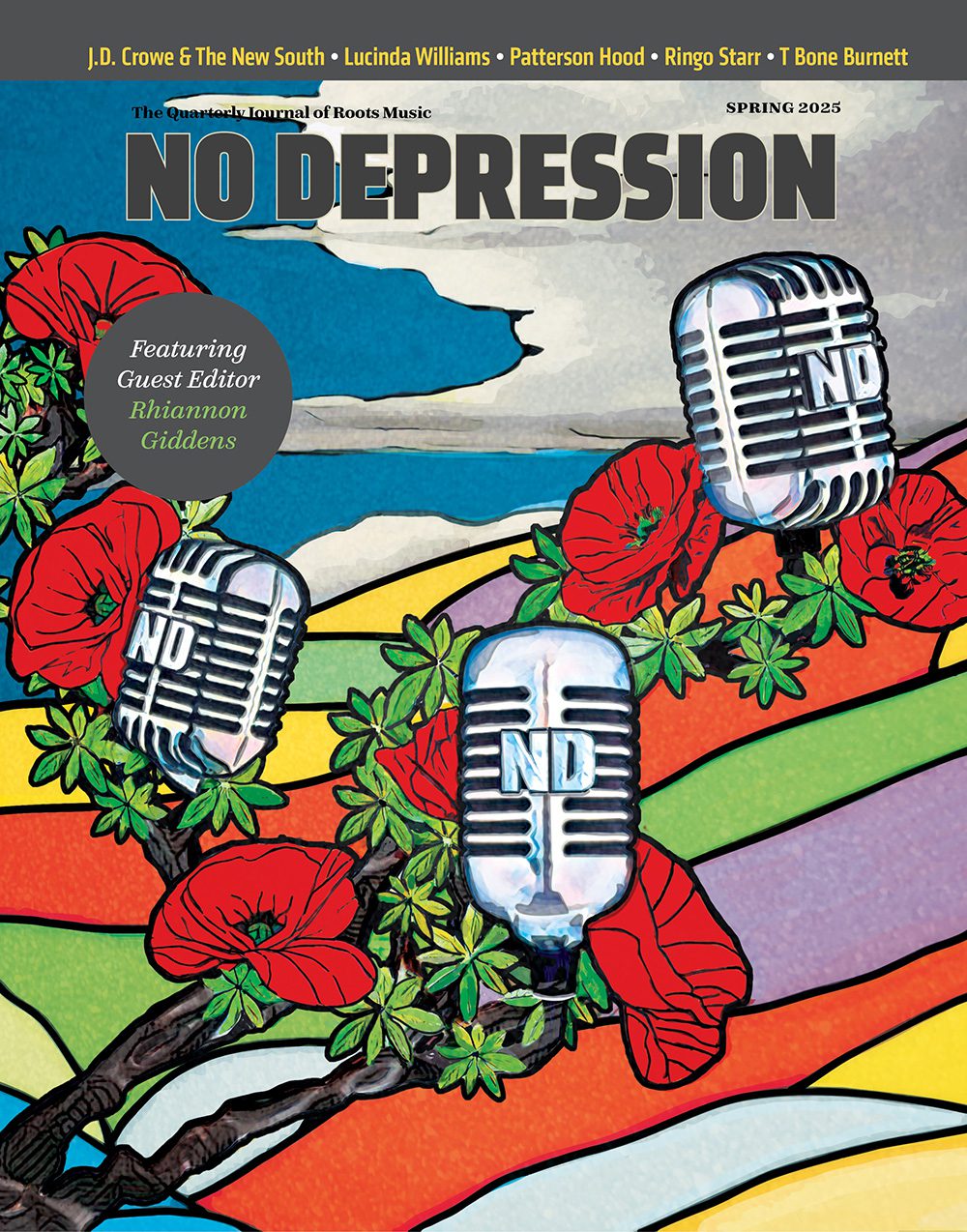Hello Stranger from Issue #21
The, uh, unorthodox cover of this issue was really just a coincidence, driven primarily by the dilemma of how to present a decidedly horizontal photo within a plainly vertical template. But once Grant had stood one of the basic tenets of graphic design on its head, the “turning alt.country upside down” subtitle followed quite naturally — and also seemed to tie into one of the cover story’s primary themes, which I’ll attempt to address further in this space.
Little signals seemed to keep dancing around the central subject matter in recent days and weeks. For one, there was the Billboard brouhaha, in which the industry bible neglected to include new records by both Steve Earle & the Del McCoury Band and Kelly Willis on their country albums chart, costing both of them what would have been fairly high debut rankings. (To their credit, the magazine corrected their mistake the following week; at last look, in the April 10 edition, Earle/McCoury was at #30 and Willis was at #36, each after four weeks on the chart.)
A couple days ago, Grant’s wife Susan was telling us about her middle-school students’ reactions to some of the music she plays for them in class occasionally. One day one of the students complained about a record she was playing, declaring: “Ms. Thomas — no country music!” Susan replied, “It’s not country, it’s the Jayhawks.” The students responded, “Oh, OK,” mollified by that answer. Which seems to indicate that, for some folks, if you simply tell them it’s not country (or, conversely, that it is country), they’ll be satisfied with such a simple method of genre definition.
Not everyone is so easily able to dismiss the categories, however. Writing in an online forum a couple months ago about a fan who approached him in Dallas recently about his band’s new album, Old 97’s bassist Murry Hammond vented his frustration over fans who like their alt-country served by standardized proportions. “Seems that Wilco has let him down this year with Summer Teeth, and apparently we are on the same list,” Hammond wrote, before discussing at length the downfalls of putting boundaries on the artistic process.
Around the same time, we received an e-mail from Joe Priebe in Cedar Falls, Iowa, that began with the declaration, “Enough is enough! I have been saying for the past few months that if another album of ‘this type’ comes out soon, I am going to let it be known that it is going to be detrimental for all, and more frankly, some of us are simply sick of it.” Priebe went on to cite new albums by Wilco, Joe Henry, Son Volt, Golden Smog, the Jayhawks, the Mavericks, Jolene and Dolly Parton as examples of artists who have “strayed far away from earlier releases that most of us are accustomed to.”
One of Priebe’s primary concerns was simply that some artists become concerned about being pigeonholed or labeled as a certain kind of sound to the point where they instinctively seek to break away from that category. And, granted, musicians who trust their own inner visions and abilities need not feel obliged to alter their course in reaction to any outside forces.
But that’s not necessarily going on here. While we’ve certainly tired of folks who seem to recoil at the mere mention of “alt-country” as well, many artists understand that a genre tag can sometimes simply reflect a supportive community. “I only ever felt like it helped us to be part of a perceived movement,” Old 97’s singer Rhett Miller said during our interview for this issue’s cover story. “I never really felt hemmed in by it.”
If fans wish the artists would accept the support of such a community without feeling a need to shun it, it follows that the artists would want the fans to be more understanding of their need to stretch beyond the boundaries represented by genre tags. They are, after all, only words, when it comes right down to it.




